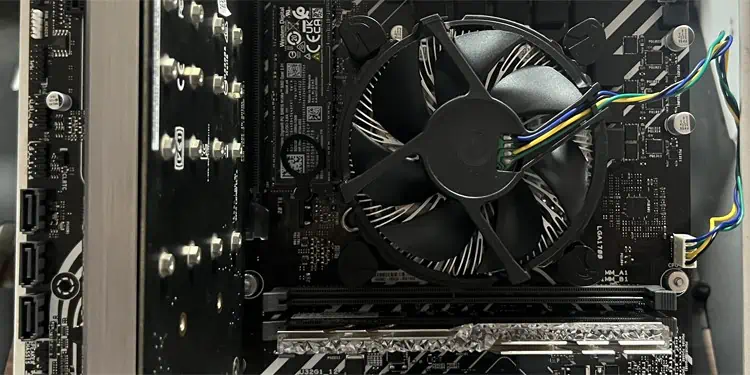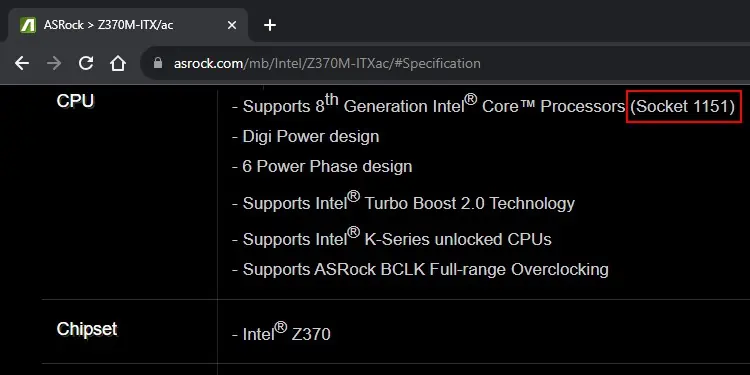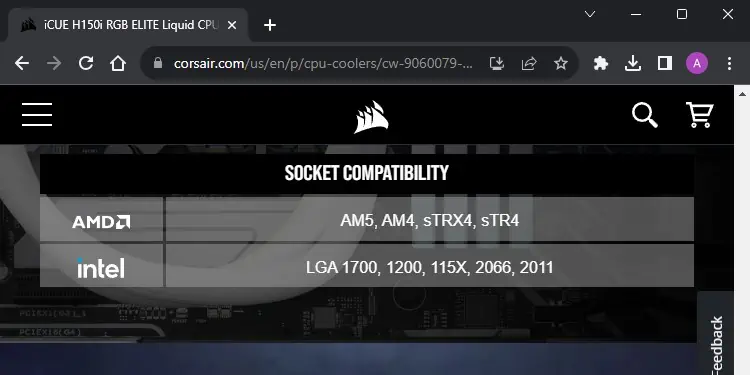Having a good CPU cooler is a must, especially if you want to build a beefy PC setup. You will find many kinds and sizes of coolers in the market, but not all will fit well within your device and budget.
Your CPU cooler compatibility depends a lot on your motherboard, CPU, and case. It also relies on the placement of other hardware components. So before you decide which cooler you wish to buy, you need to check if it is compatible with all these components.
In this article, I will only be talking about standard air and AIO liquid coolers. The custom loop is a whole different story, as you can usually personalize their design in any way you want.
Check the Compatibility List Online
Many cooler manufacturers host a compatibility-checking platform on their official website. With it, you can check the compatibility of their products with different motherboards. Some manufacturers also host similar lists for your CPUs, RAMs, and Cases.
You can search for such platforms and go through the options/list to find all the coolers that are compatible with your setup.
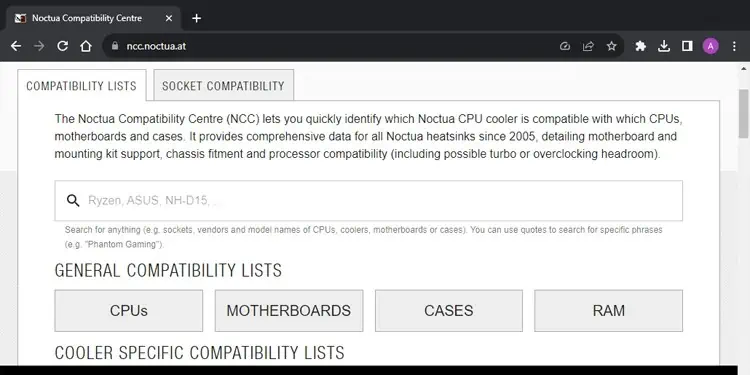
Similarly, you will find many other online sources like forums, videos, third-party platforms, and so on, which help in PC building. You can also search for and check out those sources to look out for compatible CPU coolers.
Manually Check for Compatibility
All hardware products come with unique specifications, which also include compatibility information so that the users can know what other components to get.
You will be able to find the compatible cooler by comparing its specifications with those of your PC components. The motherboard, CPU, and case matter for both AIO and air coolers. However, most AIO coolers should be compatible with all types of RAMs or other internal components on your PC.
Motherboard’s CPU Socket Type/Size
The processor socket size that your motherboard supports is one of the most important parameters you need to look out for while checking the CPU cooler’s compatibility.
Intel and AMD processors use different socket size metrics. It may not matter for most modern coolers as they come with support for both types of processors. However, some coolers only target one type of CPU, so you have to be careful while choosing it.
Also, the socket sizes vary a lot between individual processors. You can’t fit a cooler that targets a larger socket size on a much smaller size CPU socket.
- First, go to the official page for your motherboard model and check its processor specifications to learn about the socket type. You also need to do the same to select the proper CPU for your device.

- Then, you can look for coolers that fit this size. You don’t need to get one for the exact size; similar sizes should generally be compatible.
- For instance, if your motherboard’s Intel CPU socket size is 1151, it should also be compatible with LGA 1152, 1155, or 1200 CPU coolers.
- Also, most AMD sockets are cross-compatible, so you may be able to use AM4 coolers with something like an AM5 socket.
- You can also go through the official web pages of individual CPU cooler models to check for socket compatibility.

CPU TDP Rating
You also need to make sure that the cooler provides enough cooling capacity to support your CPU’s Thermal Design Power (TDP). While most coolers nowadays should be suitable for standard CPUs, higher-end CPUs need coolers with high cooling TDP.
For instance, AMD Ryzen 9 7950X has a TDP of 170W. So a CPU cooler with a cooling capacity TDP of 120W will not be enough to maintain its temperature.
So, you need to check your CPU specifications for this information and select the cooler accordingly.
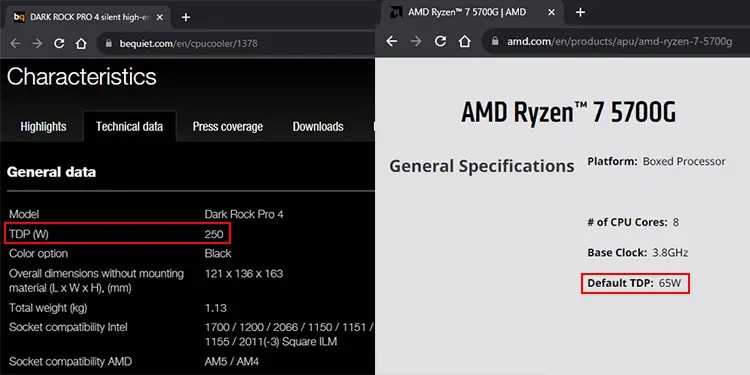
Clearance for Case
You must also check the clearance on the case for the cooler. Use case varies depending on whether you want to use an air cooler or an AIO liquid one.
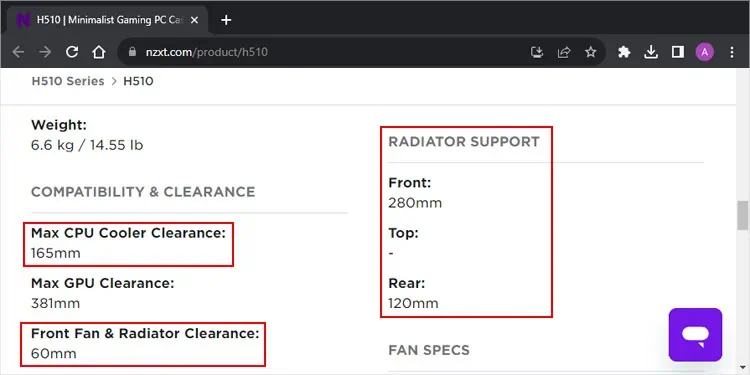
Air Coolers
Since you will be installing a CPU air cooler inside your PC case, it naturally needs to fit inside the case. Coolers, especially air coolers, come with different dimensions, so one that is suitable for a Full Tower ATX case may not be suitable for Mini-ITX cases.
- You need to check the official specifications of the PC case to learn about its Max CPU Cooler Clearance.
- This number represents the maximum height a CPU cooler can have to be able to fit inside the case.
- So you should look for the cooler’s dimensions before selecting it for your CPU.
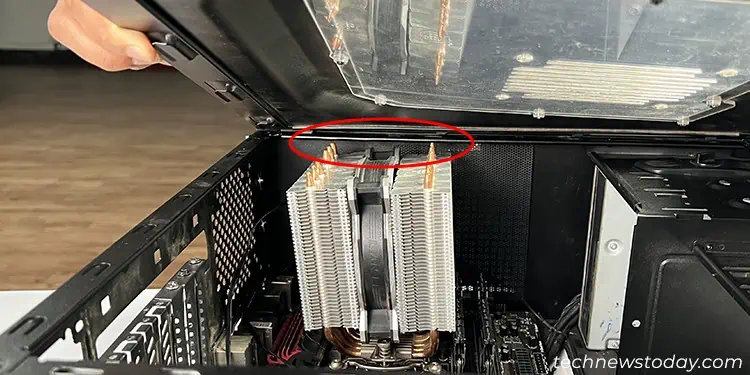
AIO Coolers
If you are installing an AIO cooler, you need to make sure that you can place its radiator in the position or slot you want.
- You can check the dimensions of the radiator and your case’s fan slots for verification.
- Some PC case manufacturers also specify the support for Radiators, so you can check those as well.
- Also, you must not bend the AIO pipes too much, or else they may leak. So your case needs to have proper clearance for these as well.
Clearance for RAM
Apart from the case itself, the CPU cooler also must not obstruct the RAM. However, you only need to check for RAM clearance for air coolers. AIO pumps usually take up smaller space and don’t block the RAM slots.
You have to consider many things, such as the RAM’s height, the cooler’s dimensions, the number of RAMs and RAM slots, etc.
- If a cooler provides enough clearance that you can safely insert and remove your RAM sticks after installing the cooler, it is the best option. So if possible, try looking for a cooler that you can orient in such a way that it doesn’t cover the RAM slots.
- However, if you want a beefy cooler, it won’t allow for such clearance. So, you must select a cooler with RAM clearance higher than the RAM stick’s height.

- You may be able to adjust a little depending on the type of air cooler. For example, vertical towers need case fans that may not allow for such space. However, if your case allows it, you can move the cooler’s fan slightly upwards to get enough space for the RAMs.

- Similarly, if it is possible to remove the heat spreader from your RAM sticks, you can do so to lower the RAM’s height. However, make sure that the RAM doesn’t touch the cooler, as it may cause issues with its temperature, especially if you are overclocking the RAM.
- A cooler, even beefy one, may not obstruct all the RAM slots. So you may be able to use your RAMs even when the cooler doesn’t allow sufficient height clearance.

- If applicable, you can also try switching to another RAM with a lower height so that it is more compatible with the cooler you want.
You can find all the necessary height and clearance information from the RAM and the CPU cooler’s specifications. Select one component depending upon other.
Motherboard Layout
Apart from the RAM, the CPU coolers must not obstruct some other PC components that remain close to the CPU. These devices include the chipset heatsink, graphics card, VRM, I/O ports, and M.2 SSD.
You need to check your motherboard layout and compare it with the cooler’s dimensions to avoid such obstruction.
